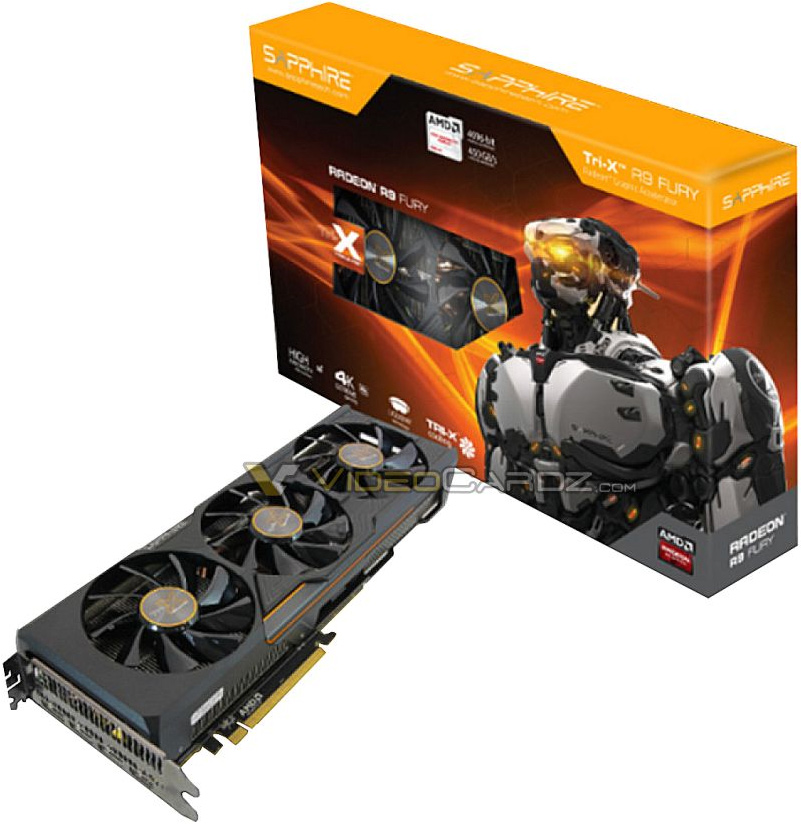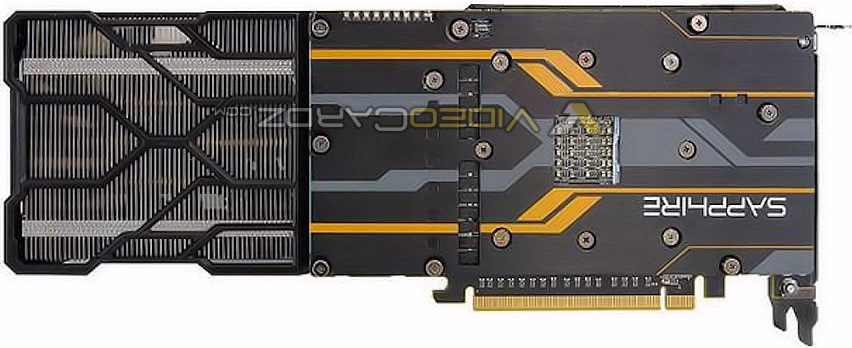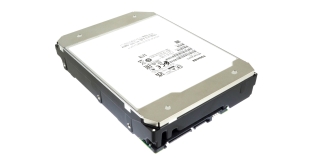A web-site has published the first images of Sapphire Technology’s Tri-X R9 Fury graphics cards. The adapters will use reference printed circuit boards developed by Advance Micro Devices as well as massive cooling systems designed by Sapphire.
AMD Radeon R9 Fury graphics cards will be based on a version of “Fiji” graphics processing unit with 3584 stream processors, 192 texture units, 64 raster operations pipelines and 4096-bit memory interface. The adapters will be equipped with 4GB of HBM memory operating at 1GHz. Select makers of graphics cards will be allowed to use their own coolers and eventually design their own printed-circuit boards for such cards.
According to VideoCardz, Sapphire will offer two versions of Tri-X R9 Fury graphics adapters: one with 1GHz GPU clock-rate and another with 1040MHz GPU frequency. Both graphics boards will use the company’s own Tri-X cooler with three fans and a backplate. Both cards will be equipped with four display connectors: three DisplayPort 1.2 and one HDMI (1.4a).
Sapphire is one of the closest partners of AMD and is among the largest suppliers of Radeon adapters on the planet. If the company does not overclock the “Fiji” graphics processor on its Radeon R9 Fury graphics adapters significantly, then this may indicate that the GPU is not a really good overclocker. Due to low overclockability of AMD’s “Fiji” chip, performance difference between Radeon R9 Fury and Radeon R9 Fury X will be as high as 25 per cent.
AMD Radeon R9 Fury graphics cards will hit the market on the 14th of July, 2015, MSRP of the R9 Fury is $549.
AMD and Sapphire did not comment on the news-story.
Discuss on our Facebook page, HERE.
KitGuru Says: The Fury X was designed to run at a max temperature of 50 degrees under load so it will be interesting to see how these air-cooled versions perform, especially where cooling is concerned.
 KitGuru KitGuru.net – Tech News | Hardware News | Hardware Reviews | IOS | Mobile | Gaming | Graphics Cards
KitGuru KitGuru.net – Tech News | Hardware News | Hardware Reviews | IOS | Mobile | Gaming | Graphics Cards





Oh dear.
Two of these for $1000 is the the default high end 4k solution in 2015. I wish they were 2 slot and taller instead of 2.2 slot and longer though. There will be versions like that anyway.
Since when?! Two after-market 980’s would offer better performance as a)more OC headroom and b) much cooler which is vital in dual GPU setups. Also agree with the width issue. Using a mini-itx setup, having wide cards just isn’t possible.
Fury clearly beats 980 with launch drivers, especially in 4k, never mind when it’s drivers mature a bit. Crossfire beats SLI in dual card mode slightly and absolutely demolishes SLI in 3+ card mode. There will be all types of custom Fury cards, that is an issue with just this Sapphire cooler. Power consumption isn’t a factor for me in a high end gaming config, only in a HTPC environment where I want complete silence (100% passive cooling). For my HTPC I’m currently stuck waiting for NVidia to launch a die shrinked 90-100W card after the gtx960 dissapointment. FreeSync support on the other hand is a huge factor, as soon as a 23″-24″ 1080p 144Hz IPS FreeSync monitor appears, that will be my gaming monitor. For now there is an Asus 1440p IPS FreeSync for $600 and an Acer G-Sync for $800.
Neither can actually do 4k making the high resolution argument a waste of time. And if you are going to go triple card, then you get the Fury X or more likely the 980Ti, with the latter being the clear winner.
Two Fury cards are enough for 4k. Tri-SLI is useless.
Are there any reviews comparing aftermarket 980’s in SLI to the Fury in CF?